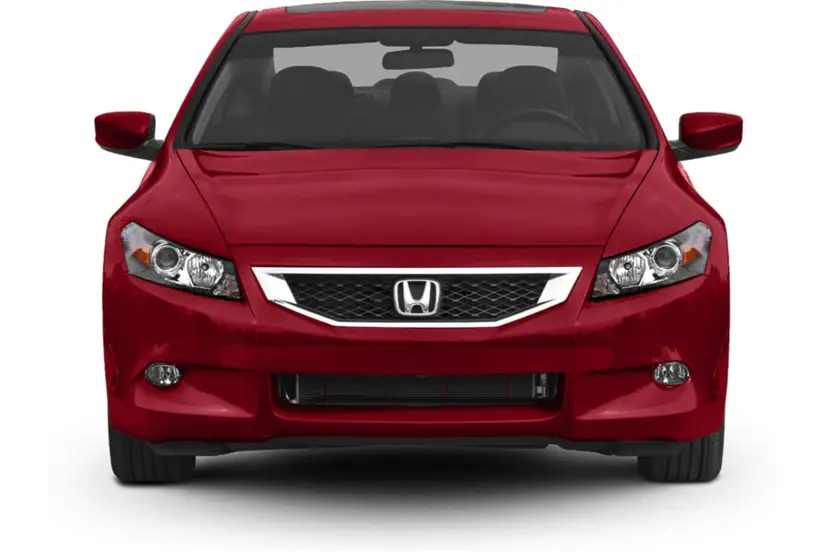
Editor’s note: This review was written in June 2010 about the 2010 Honda Civic. Little of substance has changed with this year’s model. To see what’s new for 2011, click here, or check out a side-by-side comparison of the two model years.
Refined and reliable, the plucky Honda Civic has stayed competitive even as it enters its fifth year on the market for the 2010 model year. Seldom do cars age this well; Honda has the automotive equivalent of a Julianne Moore or Harrison Ford.
The Civic comes as a coupe or sedan with a manual or automatic transmission. From the bare-bones DX to the well-equipped EX-L, there are four coupe and six sedan trims. There’s also the high-performance Civic Si, which comes only with a manual, and the natural-gas-powered Civic GX sedan, which is sold in California, Utah, New York and Oklahoma. The gas-electric Civic Hybrid, available as a sedan with an automatic transmission, is covered separately on Cars.com.
Across the board, little has changed for the 2010 model, which you can compare with the ’09 Civic here. I evaluated an automatic Civic EX sedan, but we’ve tested other trims in years past.
A Cut Above
We recently compared the Civic with two competitors, the Toyota Corolla and Nissan Sentra. Time and again, editors marveled at how the Civic simply felt like a richer car. The turn-signal and wiper stalks move with exacting precision, and the gearshift moves from Park to Drive just as cleanly. The climate controls’ well-crafted buttons operate with astounding quality. The Corolla’s clumsy air-conditioning controls are to the Civic’s what a Guitar Hero prop is to a Gibson Custom.
Cabin materials are mixed. The headliner is a nice woven cloth material, but the door handles are made of dullish gray plastic. But Honda deserves praise for investing where it counts. Affordable cars can’t have expensive finishes everywhere, and too many competitors pad the dash while resorting to cheap, hard paneling on the doors and armrests. The Civic has it the other way around — and given your elbows and arms end up everywhere but the dash, I think Honda got it right.
The driver’s seat adjusts far enough back for those 6 feet or so tall, helped along by the standard telescoping steering wheel. The front seats are firm but comfortable, and the bottom cushions provide good thigh support — something few small cars do well. The gearshift sits low enough to allow your knees to spread wide.
Indeed, the cabin is an exercise in space efficiency: Passenger volume for the sedan is less than 91 cubic feet; that’s just shy of the Corolla but some 6 to 7 cubic feet short of the Sentra, Kia Forte and Hyundai Elantra. Yet thanks to a cockpit that falls away from you at all angles, the Civic doesn’t feel as cramped as its numbers suggest.
The sedan’s rear seat sits low to the ground, so adults may find their knees in the air, but headroom and legroom are adequate. The Civic coupe, in contrast, loses 4.3 inches of legroom in the backseat, to uncomfortable effect. Coupes can still seat three in back, but no one will enjoy the ride.
EX, EX-L and Si models get a 60/40-split folding rear seat; lower trims have a seat that folds in a single piece. The sedan’s trunk volume, at 12 cubic feet, is on the low side for the segment. Civic coupes have just 11.5 cubic feet.
Going & Stopping
Though the Civic’s standard four-cylinder has unremarkable specs — 1.8 liters, 140 horsepower — it feels peppy enough thanks to a responsive accelerator and a well-mannered five-speed automatic transmission. It upshifts smoothly and isn’t afraid to kick down on the highway; it doesn’t take much to coax fourth or even third gear in the passing lane. The Mazda3’s five-speed automatic behaves similarly, but other automakers’ four-speeds largely fall short.
Typical for this class, pushing the Civic hard or loading up with passengers reveals the drivetrain’s limited reserves. The engine drones loudly, but its modest torque will leave lead-footers wanting more. One option: Get the manual transmission. Available in every trim save the GX, it makes the most of the engine, and its precise shifter is one of the better ones in this league.
Four-wheel-disc brakes go on EX and higher trims, with rear drum brakes installed on lesser trims. Antilock brakes are standard. Our test car didn’t exhibit the best braking linearity; you have to push the pedal a few inches before the brakes really bite down, but overall stopping power is strong enough.
Civic Si models have larger front disc brakes to complement their drivetrain: a 2.0-liter, high-revving twin-cam four-cylinder that makes 197 hp. Paired with a six-speed manual, the Si revs smoothly and packs its strongest punch at high rpm; our friends at “MotorWeek” hit 60 mph in 7.2 seconds in their last Si — much quicker than the 1.8-liter automatic Civic’s 9.8 seconds.
Unfortunately, the Si requires premium gas and returns a middling 21/29 mpg city/highway. The 1.8-liter Civic returns a respectable 25/36 mpg with the automatic, or 26/34 mpg with the manual. Here’s how those figures compare:
| EPA Combined Mileage Compared | |||||||||||||||||||||||||||||
|---|---|---|---|---|---|---|---|---|---|---|---|---|---|---|---|---|---|---|---|---|---|---|---|---|---|---|---|---|---|
| Automatic | Manual | ||||||||||||||||||||||||||||
| Kia Forte | 28 – 30 | 28 | |||||||||||||||||||||||||||
| Toyota Corolla | 29 | 30 | |||||||||||||||||||||||||||
| Honda Civic | 29 | 29 | |||||||||||||||||||||||||||
| Hyundai Elantra | 29 | 29 | |||||||||||||||||||||||||||
| Nissan Sentra | 29 | 27 | |||||||||||||||||||||||||||
| Ford Focus | 28 | 28 | |||||||||||||||||||||||||||
| Chevrolet Cobalt | 27 | 29 – 30 | |||||||||||||||||||||||||||
| Mazda3 | 27 | 28 | |||||||||||||||||||||||||||
| Mitsubishi Lancer | 26 | 25 | |||||||||||||||||||||||||||
| Subaru Impreza | 22 | 22 | |||||||||||||||||||||||||||
| Source: EPA data for 2010 sedans with base engines. Ranges are due to fuel-efficiency options. | |||||||||||||||||||||||||||||
Ride & Handling
The 1.8-liter Civic rides on the firm side, and its suspension gives drivers a sense of being well-connected to the road. That’s due in part to the fully independent setup, which some competitors trade for cheaper semi-independent rear suspensions. That also means the Civic has a way of picking up small imperfections on the highway. Combine that with the considerable road noise that emanated from our tester’s P205/55R16 tires, and friends will think twice before voting yours the road trip car. Potholes and other major bumps are cushioned well enough, but many shoppers may want a setup that’s better at masking the little stuff.
Power-steering assist is on the low side, so parking lot maneuvers take some extra effort. But the Civic moves adeptly on curvy roads; its confident steering makes it easy to get back on track when the nose pushes wide. Body roll is noticeable but not predominant, and the seat bolsters — short but stiff — do a good job holding you in place.
The Civic Si employs a sport-tuned suspension with thicker front and rear stabilizer bars, 17-inch alloys and a limited-slip differential. High-performance Michelin Pilot Exalto PE2 summer tires are optional.
Safety, Reliability & Features
Thanks to its excellent scores in front, side, rear and roof-crush tests, the Civic sedan has the distinction of being a Top Safety Pick by the Insurance Institute for Highway Safety. But there are caveats: The status applies only to trims with an electronic stability system — and not the Civic Si, whose unique head restraints don’t provide the same rear-impact protection other Civics do. That effectively leaves the Civic EX-L as the sole Top Safety Pick variant.
The Civic coupe has not undergone roof-crush tests, but its side-impact ratings are Acceptable — one rung down from the sedan’s top rating of Good. Front- and rear-impact tests are also Good, but, like with the sedan, the rear-impact results don’t apply to the Civic Si coupe. (You might find Acceptable to be acceptable, but it bears noting that the majority of cars in the Civic’s class score Good in the side test, making an Acceptable rating below average.) Standard features on both include antilock brakes and side-impact and side curtain airbags. Click here for a full list.
Reliability for the current generation has been very good. Sedan pricing starts at $15,655; the coupe is $200 less. Standard features on the DX include power windows, a height-adjustable driver’s seat … and little else. Another $750 moves you up to the Civic VP sedan, which adds air conditioning and a CD radio with an MP3 jack. The LX sedan and coupe add power locks with keyless entry, cruise control and body-colored exterior moldings. The LX-S adds a leather-wrapped steering wheel, 16-inch alloy wheels and a rear spoiler; EX models have a moonroof, alloy wheels, steering-wheel audio controls and an iPod/USB interface. The EX-L, which starts just over $21,000, adds heated leather seats and the stability system. A navigation system is optional. On any trim, the automatic transmission costs $800.
The Civic Si starts above $22,000. Check every option, and it tops out around $24,500. In states that carry it, the natural-gas Civic GX runs $25,340 but is eligible for a $4,000 federal tax credit; with the automatic standard, it’s equipped similarly to a Civic LX.
Civic in the Market
Honda’s game isn’t as sharp as it once was. The Accord lacks its predecessor’s exceptional cabin and driving poise, landing the 2010 sedan in fifth place in our recent eight-car $25,000 Family Sedan Shootout. The redesigned Pilot misses the mark, and the automaker’s latest hybrids left us scratching our heads. In a sense, the Civic represents Honda’s good old days: high quality, fun to drive, reliable and fuel efficient.
Honda caught a break in archrival Toyota’s latest Corolla, which is a dud. Other competitors, though, from the Mazda3 to the Kia Forte, seem destined for greater success. A new wave of small cars from Chevy, Ford and Volkswagen will only make the competitive landscape even more challenging. While the current Civic should be popular into its final days, Honda’s continued dominance requires a repeat of its ’06 success when it next redesigns this car, in 2011 or 2012.
| Send Kelsey an email |

















































